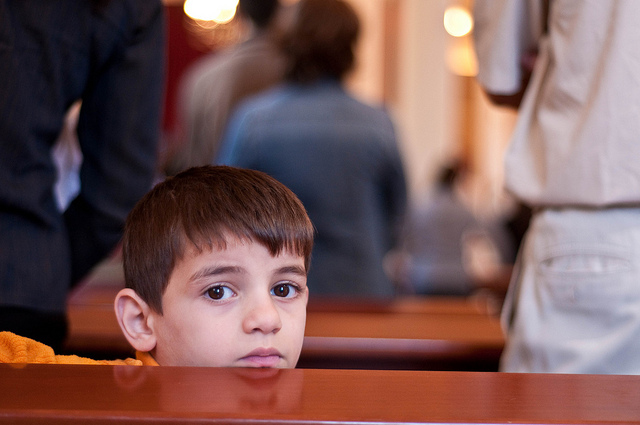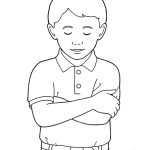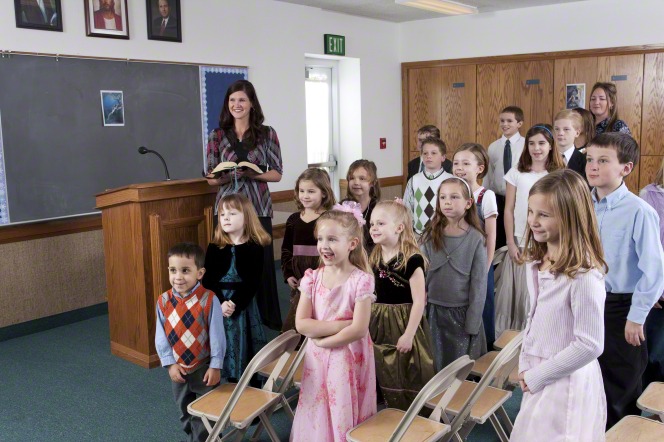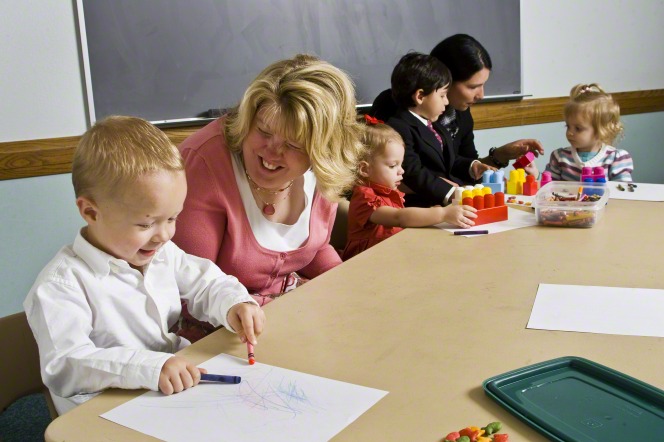Autism article
Joe is a special-needs child. He gets easily distracted and has behavior issues. What can I do, as his Primary Teacher, to help my classroom be more effective as a learning environment for him?
As his Bishop, I notice that Joe struggles to stay quiet during Sacrament Meeting, and I hesitate to approach his parents about his disruptive behavior. How can I best handle this situation?
How can I, as Joe’s Primary President help both he and the rest of the members of the Primary, especially his classmates, when his behavior becomes difficult to deal with and he doesn’t make friends easily?
As ward members of Joe’s family, we see his parents trying their best to help Joe adapt in church, but things don’t seem to be working smoothly. How can we help?.
These scenarios may hit close to home for many of us as church members. You may be the Primary President, a ward council member, or the teacher who is dealing with the difficult situation of helping a child, or adult with any number of Behavioral Disorders like: autism. It should be of utmost importance for all of us to help those we work and serve with have a positive experience. We hope this article will as as a resource to aid you in your efforts to assist these special children and adults, in learning and growing spiritually in Sacrament Meeting, Sunday School, and Primary.
The following areas should help members and leaders alike, to understand and deal with autism and other Behavioral Disorders:
- What is autism?
- How to deal with distraction
- Helping them to understand you when you teach
- How to help them control their emotions
- Why speaking loudly or giving a hug may upset them
- What to do about other kids teasing the child
- What more can I do?
What is Autism?
Autism is a spectrum disorder. This means that there can be varying levels of severity. An autistic individual will experience a greater or lesser level with communication, sensory or behavioral traits and social skills than another will have. The disorder affects each person differently.
Persons with other Emotional and Behavioral disorders, such as ADD, ADHD, Depression and Anxiety also experience a wide range of disparity as to how a particular disorder affects them personally. The following suggestions, however are applicable as general guidelines for most circumstances.
Dr. Mary Temple Grandin, a professor at Colorado State University who was diagnosed with autism at the age of two, shares with us, in a documentary called “A Mother’s Courage: Talking Back to autism,” (available for viewing on Netflix.com), that autism is a disorder where there is a disconnection between different systems of the brain.
In the middle of the brain there is “white matter.” Grandin says that this is where there are “cables that connect the different parts of the brain together.” Autism is the result when the connections between some of the systems of the brain are weak or do not exist. Thus, people with this disorder lack communication, social, and motor skills.
The following suggestions are designed to help a child diagnosed with autism or other behavioral disorder succeed in Primary:

1. Dealing with distraction. How to help help the autistic child stay focused.
A great resource to start with is: the Church’s official help page that addresses the topic of autism. This webpage illustrates ways to help and serve those diagnosed with autism.

In a classroom setting, have separate places for instruction or play.
According to Dr. Suzanne Olsen Roper, Associate Dean of Family, Home and Social Sciences at Brigham Young University, children with autism have trouble coping with chaotic spaces and noises. There is a need to alleviate confusion for the child. Setting up the classroom so that there are designated parts of the room promotes a good learning environment.
1. Have an area for teaching, sitting quietly and listening to the teacher.
2. Create an area for interaction. Objects that supplement the lesson, like coloring pages, toys, or other items that the child can visually see will help them make a connection to the lesson. Children with autism have the tendency to fixate on an item or a part of an item like a wheel on a toy car or the hair on a doll. Helping the child to connect visually between an object and lesson is imperative.
Children with autism learn best through visual learning.
Pictures are extremely helpful when they correlate with the lesson. Use the church building library. They have pictures on hand for every lesson. It is important to provide tangible items for the child to not only look at, but hold . For example: If your lesson is about Samuel the Lamanite, provide a figurine of Samuel in addition to a picture showing Samuel on the wall.
Using visual hand gestures and cues(body language) helps them understand what you are saying. Visual expression helps keep them focused on you rather than on other things.
Set a schedule.
Dr. Roper also recommends that there be a set time for every part of the lesson in a class setting. Children with autism need predictability; a schedule to work by. This helps to eliminate confusion for an autistic person. A clock in the room, signifies what time it is to do what and helps maintain focus.
Even when sacrament meeting is over, and it’s time to change meeting rooms, the child may need help. To ease the transition, give the child visual cues. In a setting where you cannot divide a room up for special instruction, like in the chapel or in sharing time, its best to follow as normal a schedule as possible.

In a classroom setting, one good way to approach change is say: “It’s ‘quiet time. Please sit and listen to Teacher’.” Each time there will be a change in schedule, make it a point to direct the child with similar statements like these: ‘It’s question and answer time,’ or ‘coloring time,’ or ‘scripture reading time’ or ‘music time.’
Providing visual cues that signify each transition time, like holding up these simple pictures that the Church has provided as a resource for teachers, is another easy way to help the behaviorally challenged child adapt to change.
Provide other activities. See, Hear and Do.
Dr. Roper also suggests that providing more activities is important in helping the whole class learn by the adage to: “keep as hands on as possible” and to have them “get up and move around”.
One idea she suggests is to have a picture folder and allow the children to pull the picture, relative to the lesson, out of the folder and show to the class instead of the teacher doing so. These kinds of specific hands on task will help all children focus.
For parents and care-givers in sacrament meeting, it’s important to provide a grab bag of different items with which the child can interact quietly. Items may include things that have different textures and colors. This will help the child to learn to be reverent and stay content while in sacrament meeting.
Another idea is to make a D.I.Y. dry-erase activity book to take to church. This tool will provide many minutes of focused concentration,as well as spiritual learning for the child.
Engage the child with what interests them.
When the child with autism has a particular interest, use it to advantage in the lesson. Even if the item or person of interest is unrelated to the topic of discussion, be creative in your efforts to make the connection for the child.
Perhaps the child likes Legos and would be able to connect to the lesson by using Legos. For instance, if the story in the lesson is about Noah’s Ark, have the children in the class to build their own arks using Lego pieces. The keys to helping a behaviorally challenged individual remain focused are consistency, preparation for change, and visual and interest connections.
2. The child with autism in my class doesn’t seem to understand what I say. How can I help him?
It’s even more challenging in a Sacrament Meeting or sharing time setting than a classroom situation. Too much auditory instruction can make it difficult for a child with autism to comprehend, so visual cues are always important. However, when they do need to listen, here are some things to consider:
Use the child’s name.
When addressing the whole class or singling out the child with autism for a question or instruction, always use the child’s name. If the instructor needs to tell the class that it is time to move on to the next part of the lesson, she should say: “(Insert the child’s name here) and class, it is time for scripture reading.” This action will allow the child to know specifically, that he or she needs to listen to the teacher with rest of the class.
Use simple vocabulary.
Avoid using lengthy sentences and instructions when conveying instructions or teaching the lesson. Instead of saying: “We will use our quiet voices and reverently fold our arms to show that we are ready to be taught”, simply say: “It’s quiet time! Fold your arms and be reverent, please.”
Repeat instructions.
It is common for children diagnosed with autism to not understand or register an instruction given to them the first time around. Repeating instructions to the child will help make sure that he or she is listening. The repeated instruction will help click in the child’s mind, “Hey, I need to do something the teacher wants me to do now.”
Provide choices.
When helping the child answer a question or make a choice, always give a short list of things to choose from. For instance: when asking about something they have learned from the lesson, direct the question clearly to the child. Call him by name, and give him a choice of possible answers related to what you are teaching. For example: ask the child to name one of the two brothers of Mosiah, list only two names, one being the wrong answer, and one the correct answer.
Always give helpful and kind feedback.
Positive reinforcement promotes a good learning environment for both the autistic child as well as the whole class. Nothing works well if there is criticism and negativity. Stay positive in spite of issues that will inevitably happen, and always reward good behavior. Almost everyone responds well to praise.

3. The student with autism/behavioral issues, in my class, tends to laugh or cry at inappropriate times. How can I help them stay calm?
Autism inhibits the child’s ability to interpret normal social and emotional cues. They may not recognize someone else’s changing emotions or even recognize different emotions they feel themselves. One way to help is to point out times in your lesson or story when someone may have felt a certain way. Use your own facial expressions to emphasize these.
Redirecting focus with something can calm them down.
When the child with autism suddenly breaks out into tears or starts laughing right in the middle of a lesson, be prepared to hand them a tangible object that she can focus on which will help to calm her down. The same, small, soft toy consistently available each week, or even one associated with the lesson will work.
Teach about emotions by using face and body language. For example: when Jesus visited the Nephites in 3 Nephi in the Book of Mormon, show that the Nephites were happy to see him. Put a smile on your face to show the ‘happiness’, that the Nephites felt. This enables the child to recognize and make the connection. Have the entire class show the same emotions/body language.
Allow for interaction between the child and classmates.
While doing the emotion exercise, have the children show each other what their happy, sad, or angry faces look like. That way the children can interact with each other in a positive way. This helps the child with autism to once again-connect.
4. A child with autism in our ward reacts badly to anyone speaking loudly or attempting to hug her. How can I show her that I am her friend?
Never raise your voice near the child.
To keep the child calm and happy, speak quietly. Children with autism are prone to be hypersensitive in hearing. Loud noises and speaking make things worse, and are, as well, inappropriate in church. If the child isn’t responding to their own name, they probably don’t understand that they are being spoken to directly.
Avoid touching him or her.
Dr. Roper adds that it is important to avoid touching children suddenly; because they often may not like to be touched. Physical contact may irritate or hurt the child. Let the child know what is going to happen if physical interaction is needed, or when they need to pay attention to something. Be discerning in your encouragement of the child’s participation. Never try to force them.
Don’t take it personally.
In classroom settings, children with autism and/or behavioral disorders, may react violently towards another person. This anger probably stems from something other than the target he seems to be angry with. Lashing out at another individual is probably unrelated to that person; and stems from something else entirely.

5. Sometimes the children in my class tease and say negative things about a boy with Autism. What can I do to stop it?
Exemplify kindness. For any special-needs student, his or her feelings are as important as those of any other child. Autism is not an exception. Make sure that, as a role model and teacher, you show kindness by example, and insist that the other children do not tease or mock one another.
Teach them to show love: one to another.
Encourage other Primary children to include the autistic child in activities. Teach them to be aware that every child, including the ones who have disabilities like autism, are children of God and must be treated as such. God loves all His children, and He wants us to love them, as He does.
Teach by example.
Always show love towards the child with autism. Treat them with respect, and your class will follow your example. Your example will show your class and other church members how to treat those who have special needs. It creates a happy and safe environment for everyone.

6. Is there anything more I can do for the child diagnosed with autism or behavioral disorders, whom I teach and associate with at church?
Be a friend.
Any child or adult who has a disability benefits from companionship. Children with autism/behavioral issues are not exempt. They need it even more. Let them know you care about them. Although communicating may take extra effort, they will come to appreciate your gestures of kindness and attention; as will their families.
Use the power of prayer.
It is always appropriate to pray for these special children, in addition to the whole Primary. Heavenly Father will always give the help and blessings needed when it is asked for. He knows best how to help us-help His special children. This is a church of service, and love, and compassion. Christ showed us how to do it, and by following His example, we follow Him.
Get parental input.
Dr. Roper suggests that it is imperative to get input from the child’s parents on how best help the boy or girl. She says: “Talk to the parents about what the child’s issues are, for parents are the best resource.” Dr. Roper also recommends that where children are old enough to understand, invite the parents talk to the teacher and class in Sunday school about the child who struggles with autism and share helpful ideas.
Participation by every child in a Primary lessons is essential to their growth. It may be a struggle to get cooperation from children who have autism or behavioral challenges, but if given the right cues and assistance, they will benefit considerably.
For further help, here are some great links to check out:
1. The Church’s resource material on autism
2. Teaching Community: 22 Tips for Teaching Students with Autism Spectrum Disorders
3. Autism-World: Effective strategies for teaching children with autism spectrum disorders




